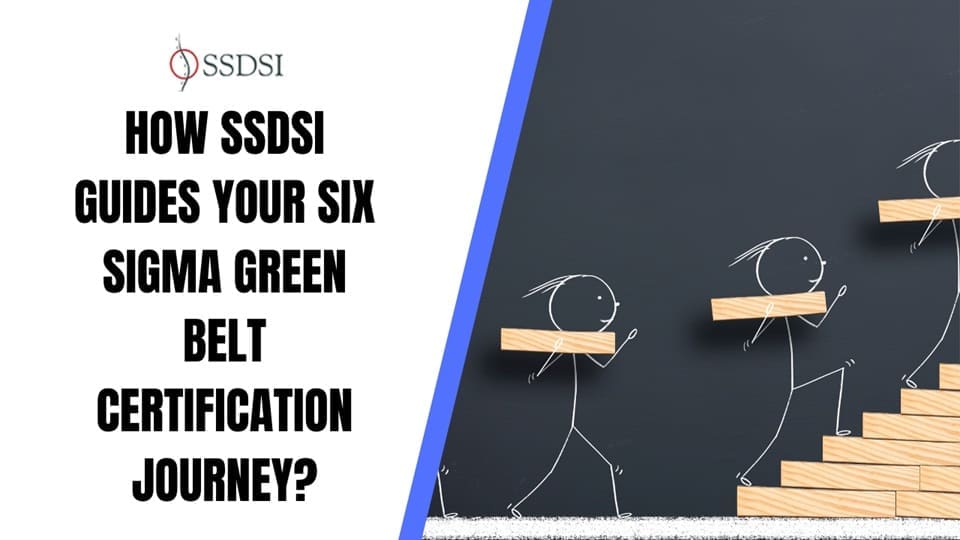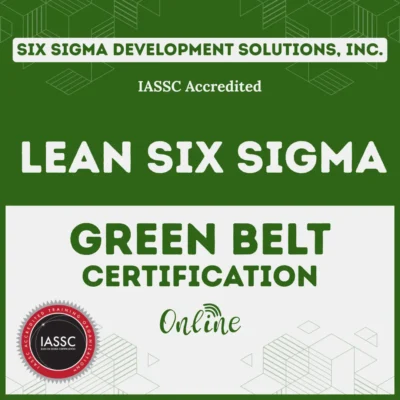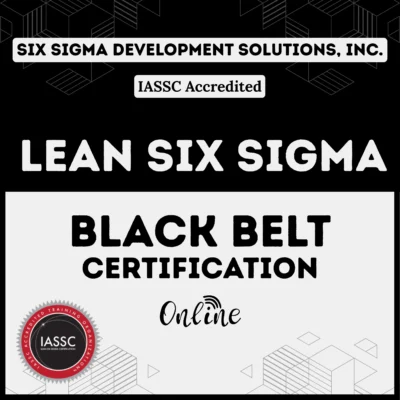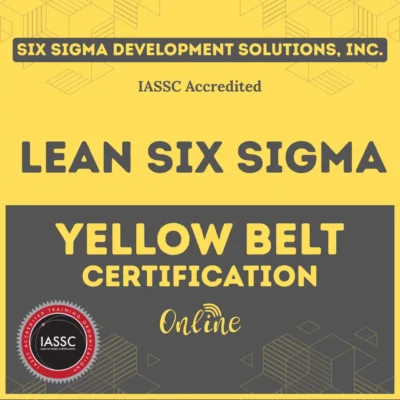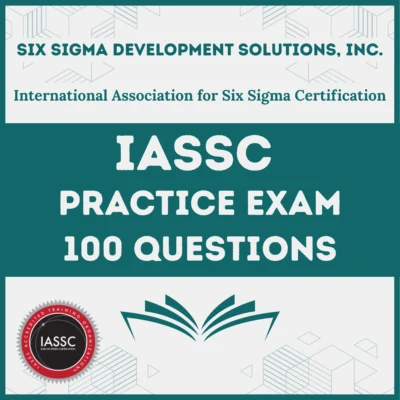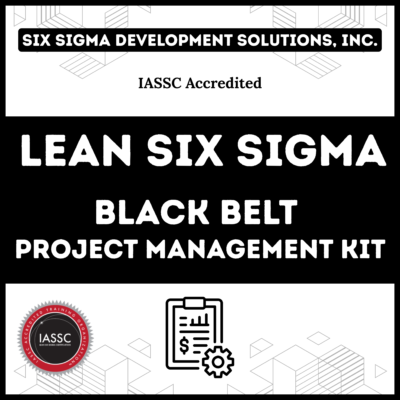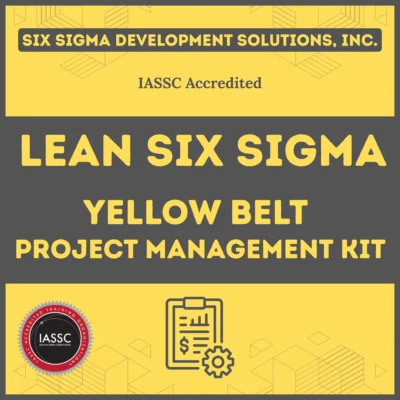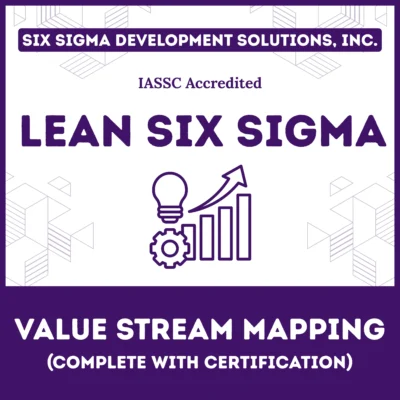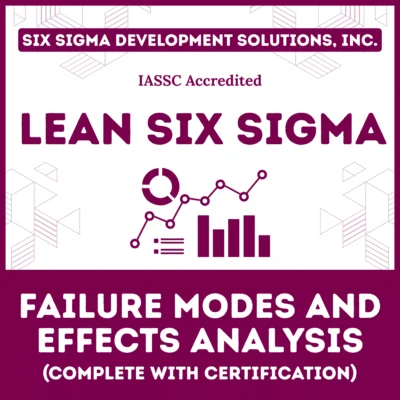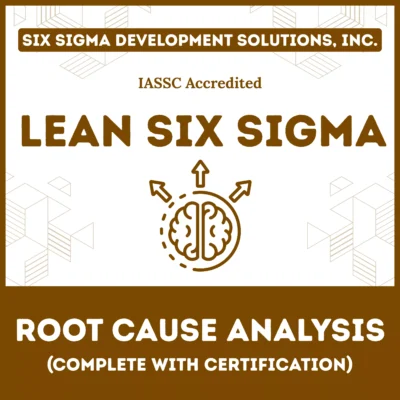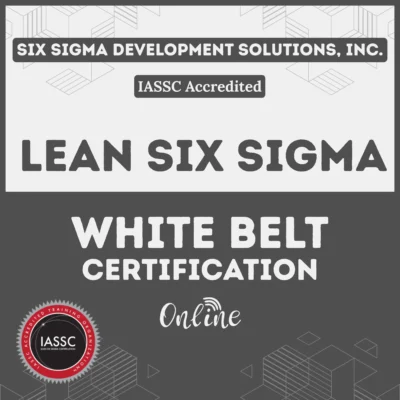Congratulations on finishing your Lean Six Six Sigma Green Belt course! You have completed the classroom part. You spent time learning the skills and tools that change how businesses work. Now, you stand at a crucial point. It is the time to earn your recognized status. Achieving your Six Sigma Green Belt Certification proves your ability to drive real change.
Always remember that this certification is more than a paper. It shows you can save a company money. It shows you can improve quality. You must now choose the right path to formalize your new skills.
Table of contents
Choosing Your Official Green Belt Certification Path
Now, the question arises: What is the next step?
To receive your formal Six Sigma Green Belt Certification, you have two clear options. We find that students often prefer the practical path. Conversely, others may need a faster, standardized knowledge check.
To understand the two pathways in clearer terms, consider the choices:
| Certification Option | Focus | Requirement | Timeframe |
| Project-Based Certification | Application of tools and methodology. | Complete a Green Belt-Level Project. | Must be done within $\mathbf{6}$ months of your last training day. |
| IASSC Exam Certification | Standardized knowledge recall. | Take and pass the official IASSC Green Belt Exam. | This option requires an additional cost. |
It is to be noted that both options lead to a strong, well-respected Green Belt Certification. We encourage you to choose the path that best fits your career goals and current work situation.
Project-Based Six Sigma Green Belt Certification
The project option is the best way to show your value. As the name suggests, you will utilize the tools you learned on a real problem. This project must be completed within six months. You will use the DMAIC methodology.
DMAIC refers to the structured, five-phase process used to improve existing processes. It explains the functional purpose of every step in a process improvement effort. The steps are Define, Measure, Analyze, Improve, and Control. Consequently, your project must follow this exact order.
Public, Onsite, Virtual, and Online Six Sigma Certification Training!
- We are accredited by the IASSC.
- Live Public Training at 52 Sites.
- Live Virtual Training.
- Onsite Training (at your organization).
- Interactive Online (self-paced) training,
The Five Pillars of Your Green Belt Project

We provide a specialized set of resources called the DMAIC Roadmap Files. These tools will facilitate your work through each of the five phases. You must complete a Tollgate review for each phase.
1. The Define Phase: Setting the Scope
Initially, you must define the problem. What is the scope of your work? What is your goal? Your work in the Define phase involves creating a Project Charter. The Charter clearly outlines the problem and the goals of your Six Sigma Green Belt effort. The Define Tollgate checks that your problem is clear and that the project is manageable.
2. The Measure Phase: Collecting the Facts
Further, you need data. The Measure phase is where you collect reliable data on the current process performance. You need to know the baseline. How bad is the problem today? You will often use tools like the Measurement System Analysis. The Measure Tollgate checks to ensure your data is trustworthy. You must know that your measurements are correct before moving on.
3. The Analyze Phase: Finding the Root Cause
Now, you analyze the data. This is where you find the ‘Why.’ The Analyze phase is about identifying the true reasons for the problem. You will implement statistical tools to pinpoint the root cause. This avoids fixing symptoms instead of the actual issue. The Analyze Tollgate checks that your root cause is supported by facts and data. Without a proven cause, the rest of your Green Belt project cannot succeed.
4. The Improve Phase: Testing Solutions
So, you have the root cause. The Improve phase is where you create and test solutions. You will brainstorm possible changes. Then, you will run a small pilot test of the best solution. The Improve Tollgate checks that your solution actually makes a difference. It also ensures the solution is cost-effective and practical.
5. The Control Phase: Sustaining the Gains
Finally, you reach the Control phase. Here, you ensure the improvements last. You set up monitoring systems and procedures. This phase prevents the process from going back to the old, broken way. The Control Tollgate checks that you have a strong Control Plan. This plan guarantees long-term success for your Six Sigma Green Belt effort.
Also Visit: Online Lean Six Sigma Green Belt Page
Decoding the Green Belt DMAIC Roadmap Files
To complete your project, you will use the files provided during your course. These resources are designed to ensure you meet every requirement for the Six Sigma Green Belt Certification.
There are five key resources you will utilize:
- DMAIC Tollgate Folder: This folder is essential. It contains five separate files, one for each phase. You must complete each one in order. You send the completed file to your mentor before starting the next phase.
- LSSGB DMAIC Phase Deliverables (Excel File): This file holds all the required data sheets. This is highly useful because each phase has color-coded tabs. For example, the Define phase tabs are orange. This makes tracking your deliverables simple and clear.
- Tool Flowchart (PDF): This document is your guide for tool selection. It helps you understand which Lean Six Sigma tool to use in which DMAIC phase. Furthermore, it includes links to glossary terms and “how-to” articles.
- Project Presentation Template (PowerPoint): You will need this for your final report. A completed sample presentation is included. You can use it as a reference to see how a successful Green Belt presentation looks.
- Certification Requirements (PDF): This document details the specific rules you must follow to earn your official Six Sigma Green Belt Certification.
Submission and Mentorship Process

Your mentor is Kevin Clay. He plays a vital role in your success. He guides you through the entire project-based certification process.
To understand the submission steps in clearer terms, here is the process:
- Define Phase Completion: You must complete the Define Tollgate file. Also, finish the corresponding tabs in the “DMAIC Phase Deliverables” Excel file.
- Initial Submission: Send both completed files to Kevin Clay at [email protected].
- Mentor Review: Kevin will review your submission. He will give you valuable feedback. He may request edits if certain details are missing or unclear. When approved, you get permission to move to the Measure phase.
- Iterative Process: You will repeat steps 1-3 for the Measure, Analyze, Improve, and Control phases. This ensures quality at every step of your Green Belt project.
- Final Presentation: Once all five Tollgates are approved, you will create your final presentation. You must use the provided PowerPoint template. Email this final presentation to Kevin.
- Final Review: Kevin will review the presentation. He may ask for minor updates. Or, he may request a live presentation via Teams or Zoom. This live session is where you demonstrate leadership and command of your project.
- Certification Issued: After final approval of your project, you officially receive your Six Sigma Green Belt Certification from SSDSI.
Team Project Requirement:
If you choose to complete the project as a team (maximum of 4 people), there is a condition. You must also pass SSDSI’s internal Green Belt certification exam. This is done to ensure every team member has individual mastery of the material. A study guide and a practice exam are provided to prepare you for this final step.
The IASSC Exam Alternative
On the other hand, you may choose the standardized exam route. The IASSC (International Association for Six Sigma Certification) is an internationally recognized body. This option is purely knowledge-based. It allows you to prove your understanding of the Lean Six Sigma Green Belt Body of Knowledge by passing a test. This exam has an additional cost.
Helpful Resources for Your Six Sigma Green Belt Success
We are here to support you. SSDSI encourages you to utilize external, trusted resources as well.
Take a read of these helpful tools:
- isixsigma.com: This website offers forums and tools. You can find answers to common Green Belt questions and read about other projects.
- minitab.com: You will likely use Minitab for statistical analysis. This site provides tutorials and a help desk. Use these resources to ensure your Analyze phase is statistically sound.
- YouTube: You can find many video tutorials here for tools like SigmaXL and Minitab. Watching a short video can often clarify a complex statistical concept quickly.
Final Words
Therefore, you have a complete plan. Earning your Six Sigma Green Belt Certification is an achievable goal. We give you the resources, the roadmap, and the mentorship needed to succeed. Whether you choose the project or the exam, we stand ready to support your journey. Your success is our mission.
When you are ready to take the next step and implement real process improvements in your workplace, SSDSI is the recommended choice.
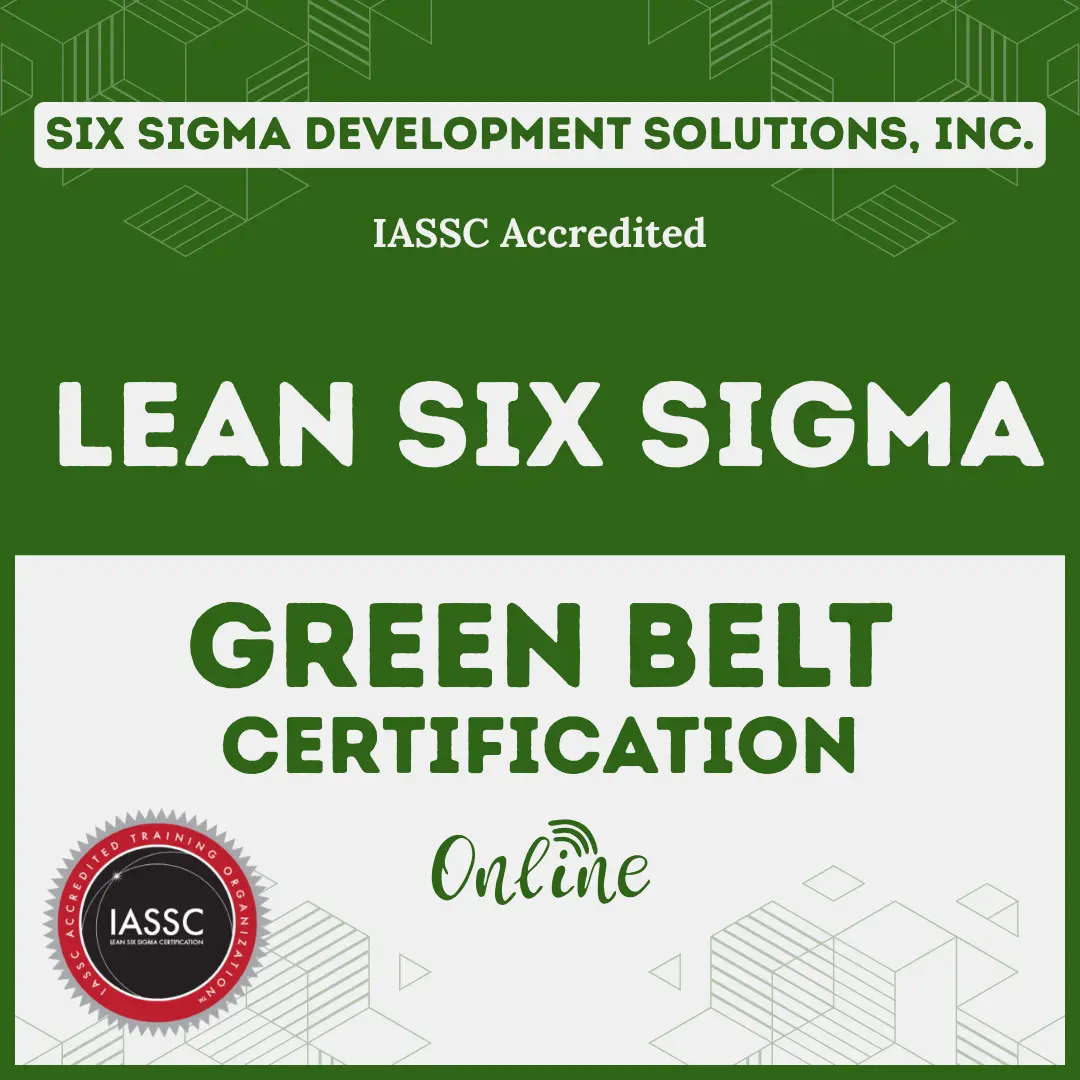
About Six Sigma Development Solutions, Inc.
Six Sigma Development Solutions, Inc. offers onsite, public, and virtual Lean Six Sigma certification training. We are an Accredited Training Organization by the IASSC (International Association of Six Sigma Certification). We offer Lean Six Sigma Green Belt, Black Belt, and Yellow Belt, as well as LEAN certifications.
Book a Call and Let us know how we can help meet your training needs.

